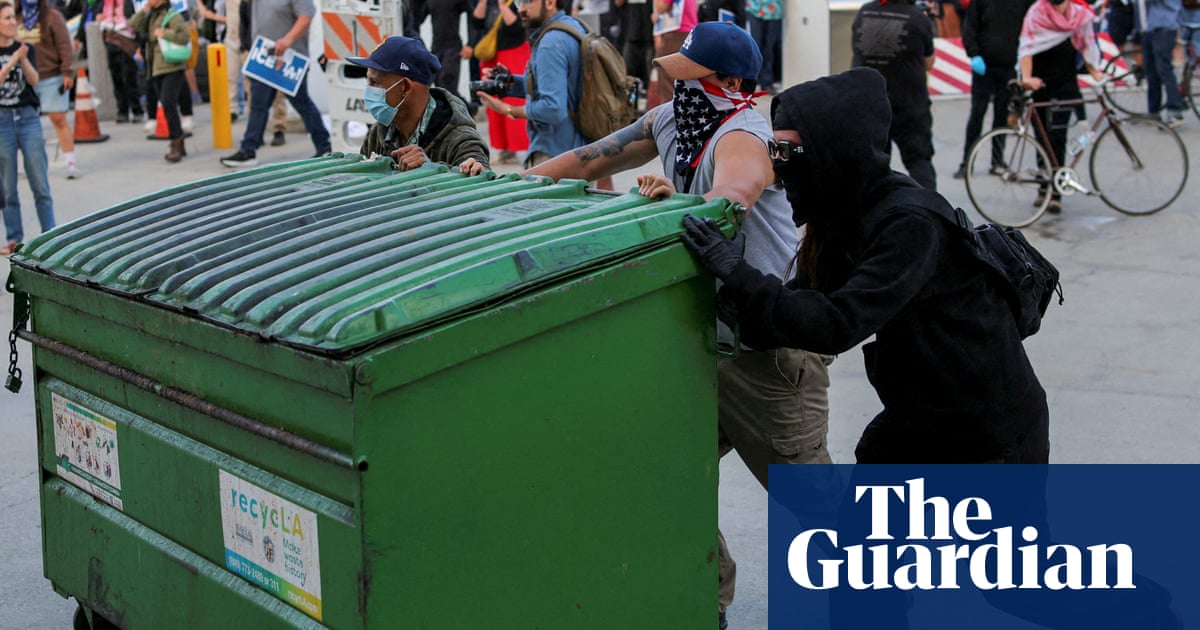The recent article about immigration raids in Los Angeles highlights the escalating tensions between federal authorities and local communities amid ongoing protests. The narrative suggests a growing divide in perspectives on immigration enforcement, particularly under the current administration's hardline policies.
Purpose Behind the Publication
This article serves to inform the public about recent immigration enforcement actions and the resulting community backlash. By documenting the protests and the use of aggressive tactics by law enforcement, the piece underscores the emotional responses of local residents and advocates against immigration raids. The aim appears to be raising awareness about the human impact of these policies and mobilizing public opinion against them.
Community Perception
The portrayal of protesters as passionate and organized indicates an effort to generate sympathy for their cause. The article highlights slogans and signs that emphasize the message of compassion and human rights, thereby fostering a narrative that frames immigration enforcement as oppressive and unjust. This depiction is likely intended to resonate with those who support immigrant rights and may encourage further activism within these communities.
Information Omission
While the article captures the protestors' perspectives and the aggressive tactics of law enforcement, it may underrepresent the viewpoints of those who support stringent immigration enforcement. By focusing primarily on protests and arrests without detailing the rationale behind the enforcement actions, the article could be seen as biased, potentially obscuring a more nuanced discussion about immigration policy.
Analysis of Manipulative Elements
The language used in the article, such as "sow terror" and "chaos and lawlessness," can evoke strong emotional reactions, potentially pushing readers toward a specific viewpoint. The framing of law enforcement's actions as oppressive while portraying protesters as victims suggests a deliberate effort to manipulate public sentiment. This raises questions about objectivity in reporting.
Truthfulness of the Reporting
The article appears to accurately report on events, including specific incidents such as the use of teargas and arrests. However, the selective emphasis on certain aspects may create a skewed perception of the overall situation. Thus, while the factual basis is present, the interpretation leans towards an advocacy perspective.
Broader Context and Connections
This incident aligns with ongoing national debates about immigration policy, particularly under the Trump administration's agenda. It reflects a broader trend of increasing tensions between federal and local authorities, especially in urban areas with significant immigrant populations. The article could also connect to other coverage of similar protests across the country, illustrating a nationwide movement against immigration enforcement actions.
Impact on Society and Economy
The coverage of these raids and protests has the potential to galvanize community action, influencing local political dynamics and possibly shaping future legislation regarding immigration. Economic implications may arise if businesses in affected areas suffer from decreased patronage due to heightened tensions or if fear of enforcement leads to lower workforce participation among immigrant populations.
Support Base for the Article
This article is likely to resonate with progressive communities, immigrant rights activists, and those advocating for social justice. By highlighting the emotional and human rights aspects of immigration enforcement, it appeals to those who prioritize compassion and inclusivity in policy discussions.
Implications for Financial Markets
While the article may not directly influence stock prices, it could impact sectors reliant on immigrant labor or those affected by changes in immigration policy. Companies that thrive in diverse, urban environments may experience shifts in consumer behavior based on public sentiment toward immigration.
Global Power Dynamics
The article's focus on domestic immigration policy reflects broader global issues of migration and human rights. As nations grapple with immigration, the U.S. response may influence its international standing and relationships with countries of origin for migrants.
Potential Use of AI in Reporting
There is no clear indication that AI was employed in the creation of this article. However, if AI were involved, it could have influenced the tone and structure, potentially guiding the emphasis on specific themes such as community activism or law enforcement actions. The overall narrative could benefit from AI's ability to analyze public sentiment and tailor content to engage specific audiences.
In conclusion, the article presents a scenario that highlights significant societal issues, but it does so with a perspective that may not fully represent the complexities of the immigration debate. The emotional language and focus on protests indicate a potential bias, suggesting an advocacy angle rather than pure reporting.
